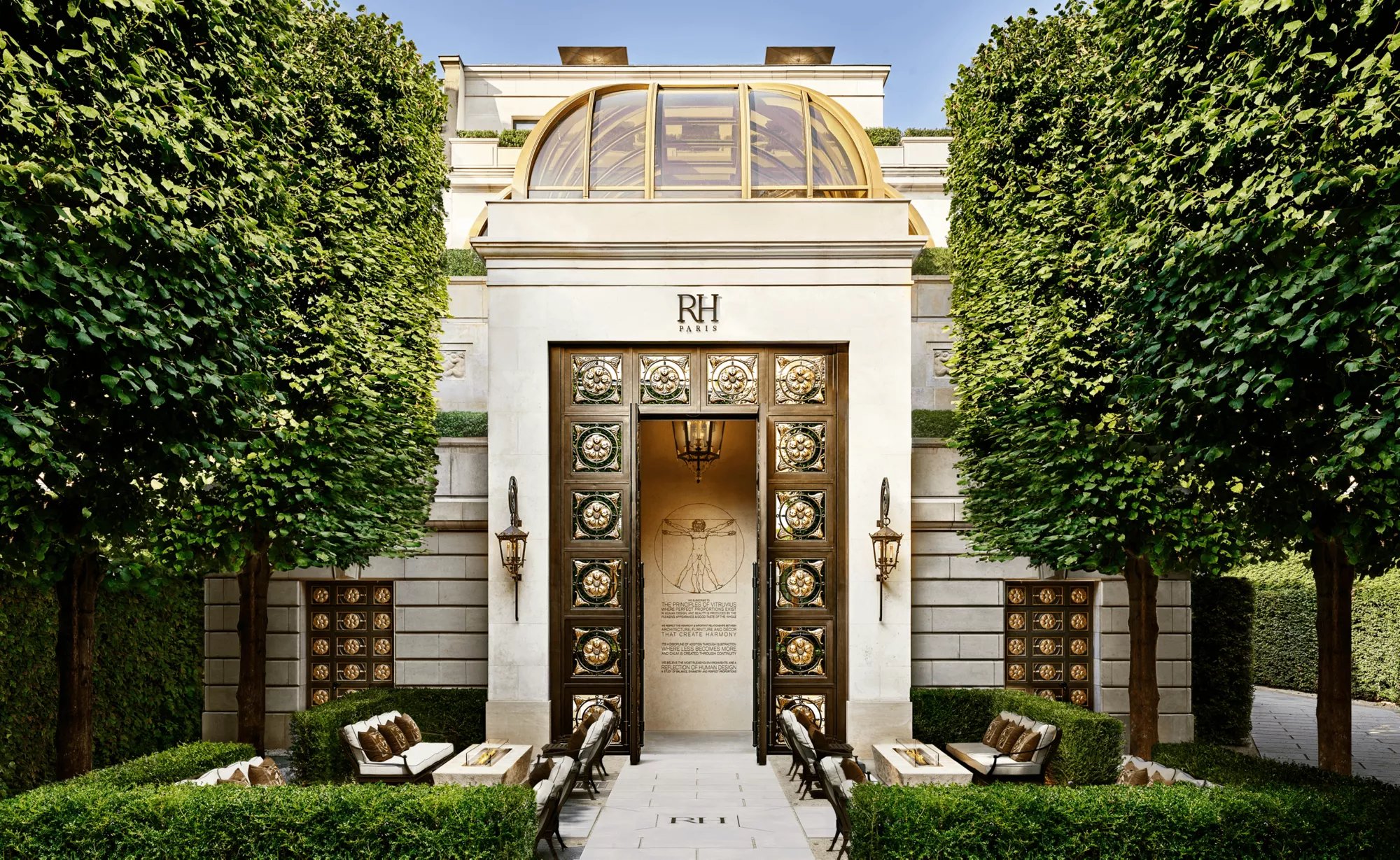While much has been said about upscale furniture retailer RH's (RH +0.32%) soaring stock price recently, less attention has been paid to the story behind the company's radical overhaul.
CEO Gary Friedman is making some intriguing contrarian bets for RH, pursuing experiential stores in an industry that's downsizing its bricks-and-mortar footprint. Meanwhile, Friedman's embracing a membership model, physical catalogs, and a premium market at a time when most everyone else is slashing costs, running promotions, and scrambling to move online.
In the company's most recent conference call, Friedman shared his thoughts on the company's business model, the retail industry's herd mentality, and the habits and desires of furniture shoppers. Here are the three takeaways I found most interesting:
1. It's not all about online -- it's about members
While the rest of the retail world is focusing on how to outcompete Amazon.com (AMZN 0.11%) in one way or another, RH is trying a different tack. Friedman and his executive team have taken a page right out of Amazon's playbook and are using the membership model (a la Prime) for their retail business.
It's a business model that's been underutilized by the retail market, but it's one that has paid dividends on both ends of the spectrum -- from discount stores like Costco (COST +0.38%) (introduced well before Amazon) to high-end furniture retailers like RH. Today, a full 95% of RH's business is driven by members. And Friedman claims it's the simplicity that separates it from the rest of the pack.
RH's membership is a $100 annual fee that comes with an across-the-board 25% discount on full-price items and a handful of other perks. The model was brought up a full 19 times on the recent quarterly conference call. Here's why Friedman thinks it works while other loyalty programs miss the mark:
... there's so many people that through loyalty programs and other things that are doing so many meaningless things with points and this and that, like -- does it really affect anybody's behavior? I don't know, I get so much of that marketing stuff coming out at me. We don't want to complicate membership, we really don't. It's simple and it's working, and it has smoothed out our business and allowed us to begin building an entirely new operating platform that is going to leapfrog this company's operating performance.
2. Product plus publicity beats advertising
Friedman had a lot to say about RH's emphasis on the product and customer excitement around that product versus the company's own promotional activity. RH makes high-end furniture, what is often referred to as "aspirational" items, so it's crucial for the company to have cachet in the marketplace -- in its stores, through its branding, and with its products.
Our biggest priority is to have them be excited about the goods we sell because I think a lot of people in our industry miss that point. It's about the goods, and it's about your presentation of the goods, and the value equation of the goods, and you can do all the social media stuff and all the loyalty programs and all the customer engagement you want. And if you don't have the right goods and they're not presented the right way with the right value equation, you're going to go home. And so, that's where we focus.
To even further enhance the cachet of its products, RH has leaned into "hospitality" offerings like in-store wine vaults, restaurants, and cafes, set within the store -- or "gallery" as RH calls them -- in dramatic atriums or even on the rooftop. Regardless of the format, each venue is surrounded by RH furniture available for purchase.

The courtyard at RH's Chicago "gallery" store. Image Source: RH.
These novel settings have inspired new foot traffic into stores from otherwise unlikely visitors. As the company points out, its RH Chicago gallery at the Historic 3 Arts Club became the seventh most "Instagrammed" cafe last year as visitors uploaded and tagged photos of the venue through the popular social media app. Meanwhile, the same site has been host to more than 50 wedding proposals since 2015.
This isn't a vanity project, however. The financial results of the 3 Arts Club have also proven impressive: It exceeded $5 million in revenue in 2016, its first full year in operation, and sales have increased since.
3. Why high-end furniture retail is so unique
One of the most relevant takeaways of the call was also one of the simplest. "[F]urniture is high-ticket, low-velocity business," said Friedman at one point. He went on: "And, like I say, it's very difficult because, my days at...Gap, you had men's and women's tops and bottoms and accessories, everything folded the same size, everything went into the same-size box and nothing broke in transit. Everything here comes in a different-size box and almost everything except bedding and some of the textiles can break in transit and get massively damaged. And it's just a completely different business with completely different math."
I suggest it's relevant to think of high-end furniture much differently than other retail products. For one, furniture purchases are infrequent. This means two things. First, natural recurring foot traffic is low. Unlike clothing, big-box retailers, or grocers, customers don't visit furniture stores frequently unless they need to. I know I don't.
This is what Friedman mean when he says it's a "low-velocity" business, so a shop like RH needs to come up with inventive ways of drawing people into the store. This is why the company is investing in unique "galleries" including nontraditional places to eat and relax: To draw customers who otherwise weren't thinking about furniture into a furniture store.
Second, once the store has the customer's interest and attention, it needs to be able to close the sale. This, too, speaks to the experience, and one of the key reasons that RH is investing in cafes, wine bars, and restaurants to accommodate customers -- i.e., make them feel "at home" rather than that they're shopping.

RH's is introducing more wine bars in stores as part of its "hospitality" initiative. Image Source: RH.
And finally, to Friedman's point about shipping products, furniture presents a whole set of complications. It is no simple feat to ship uniquely shaped, heavy furniture that's vastly different from, say, Ikea's flat or assembly-friendly home products. Building a supply chain that's capable of shipping expensive furniture around the country in a timely manner with no damage -- as RH is attempting to do -- is something few others have figured out, Amazon included.
All this to say that RH is focusing on areas of distinct differentiation: unique and enticing spaces, end-to-end experience, and the logistics backbone to move expensive products to customers in a seamless fashion.
The takeaway for investors
While RH's stock may intrigue investors given its 180% climb since the first day of 2017, it's important to pay more attention to the underlying business than the market's enthusiasm. The membership model has thus far been a winning move for the company. If RH can continue to deliver on a unique experience and build a national distribution network -- without stretching its debt load -- this could continue to be a long-term winner for investors, too.








